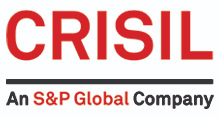TBB BUREAU
NEW DELHI, SEPT 05, 2022
The operating margin of domestic primary steelmakers is estimated to fall to 14-16% in the first half of this fiscal, compared with a decadal high 30% for the whole of last fiscal, due to high input costs, lower realisations and imposition of export duty on finished steel products, among other reasons, says a CRISIL report.
In the second half of this fiscal, however, margin pressure is expected to ease — led by lower production cost because of declining raw material prices and steady realisations backed by robust domestic demand — lifting it above 25%, it added.

Consequently, operating margin will be a robust 22-24% for the full fiscal — a good 700-800 basis points (bps) lower on-year, but higher than the pre-pandemic average of 20% logged between fiscals 2017 and 2020.
The first quarter of the fiscal witnessed significant decline in steel prices with high input costs. Though input prices have since corrected, its impact will be felt only towards the end of the second quarter, leading to a subdued first half.
Global coking coal, a key raw material that comprises 40% of the production cost and is usually imported by domestic steel manufacturers, has seen the price plummet from a historical high of ~$600 per tonne in March to $250 in August due to improved supply from Australian mines and weakening demand from global steel producers. The price is expected to remain benign as supply improves and the global demand outlook remains weak.
“Iron ore, sourced domestically and accounting for 15-20% of the production cost, has also shed more than 50% in price since May 2022 on account of increased domestic supply due to imposition of export duty of 50% on iron ore and 45% on pellets. The lower raw material prices, mainly global coking coal and domestic iron ore, may reduce production cost for domestic steelmakers by ~30% in the second half this fiscal,” said Ankit Hakhu, Director, CRISIL Ratings,
Realisations have also fallen in the first half as export duty, coupled with a moderation in domestic demand, pulled down domestic steel prices nearly 25% since April to Rs 57,000 per tonne in August. Global steel prices dropped 28% as lockdowns in China impacted global demand.
For the rest of the fiscal, global prices are likely to remain rangebound, amid a lifting of Covid restrictions by China and growing expectations of lower production curbs to meet decarbonisation goals in the second half.
“Domestic realisations are likely to find support from a revival in domestic demand — infrastructure, capital goods and automotives are expected to drive domestic steel demand growth to 6-8% this fiscal. This, along with reduced cost of production, could increase operating margin to more than 25% in the second half from an estimated 14-16% in the first,” said Hetal Gandhi, Director, CRISIL Research.
Margins for the full fiscal will still be higher than the pre-pandemic average, which should ensure sufficient accruals for continued capital expenditure towards capacity expansion. Players have also strengthened their balance sheets over the past few fiscals through deleveraging, which has eased financial pressures and will keep credit profiles stable, indicates a CRISIL Ratings study of the top five steelmakers accounting for 60% of domestic production.
The net debt to Ebitda ratio is expected to sustain around 1 time this fiscal, while interest coverage will be more than 7 times compared with more than 9 times last fiscal.
That said, a sharper-than-expected correction in global and domestic steel prices, weaker domestic demand, significantly higher-than-expected input costs and imposition of any incremental tax/duty will be key monitorables.
 The Business Bytes
The Business Bytes
